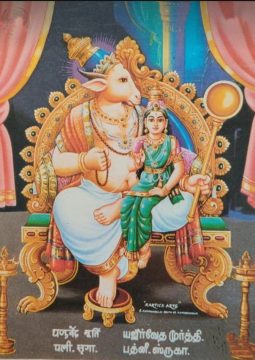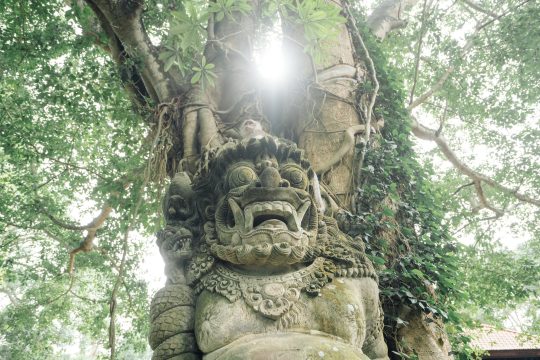- You have no items in your shopping cart
- Continue Shopping

Recently, a closed knit group of like-minded individuals including me, completed the entire Katha Upanishad over a span of approximately 2 months. It was an enlightening experience. This post stands as a Thank You note to each one of those members, and also as a window to one of the hidden gems of our ancient scriptures.
Katha Upanishad talks about life and death through an interesting story of Nachiketa.
The illuminating conversations between Yamaraj (Lord of Death) and Nachiketa beautifully explain the essence of Atman. This entire Upanishad is a compilation of 112 verses, distributed over 2 chapters, of 3 sections each. I would like to add that these ancient texts have been a source of inspiration for the currently prevalent theories of Law of Attraction, Creative Visualization and Neuro-Linguistic Programming.
Nowhere in this Upanishad, is there a mention of any particular God or religion. Any person, irrespective of his/her religion can imbibe this Vedic philosophy, that solely pertains to evolution of oneself.
Advaita philosophy is the core spirit of Katha Upanishad. Advaita literally means “No duality between God and the world”.
Aham Brahmasmi- I am God
An interesting story forms the backdrop of this Upanishad. A young Brahmin boy named Nachiketa sees his father doing a sacrifice to please Gods. He notices his father sacrificing things that are run down and not useful to him, rather than giving good things whole heartedly. Nachiketa, though just a boy could see the hypocrisy of such a sacrifice. In his youthful excitement, he tries to thinks of correcting his father’s mistake and offers himself. He asks his father to whom shall he give Nachiketa. His father on being continuously disturbed, angrily retorts that he would give him to Yama. This is how Nachiketa reaches the house of Death, where he has to wait for Yamaraj for 3 nights. Thus Yamaraj offers him 3 boons in return.
One of the boons he asked was – ‘I wish to know what happens to the soul after death. I want to know the secret of the ‘liberated soul’.
Yamaraj tests his intent and keeness for receiving such a deep knowledge. He tempts him with unsurpassed wealth, worldly pleasures and luxuries. However Nachiketa doesn’t give in to any temptations and persists in his query.
Needless to say, it is not easy to grasp what lies beyond this world or what happens to the soul after death. Even logic and intellect fail to answer such questions. One needs to go beyond the senses and mind to grasp this subtle concept. Yamaraj confirms the presence of a world deeper than the world we live in, something beyond right and wrong, beyond the cause and effect theory, and even beyond time.
On seeing the pure intent of Nachiketa, Yama readily imparts the knowledge of Supreme Self (Brahman), knowledge of Atman, knowledge of Yoga to him.
The Upanishad introduces the concept of Supreme Self, also known as Brahman or Supreme Infinite Reality. It is not only the first principle of the universe but the entire existence itself. You can call it God or by any other name, it doesn’t matter. That is all semantics.
Subsequently, Lord Yama gives an analogy of a chariot to explain this concept.
He compares the senses to the horses of chariot and mind as the reins that control the horses/senses. The reins are in the hands of the intellect/ buddhi, who is the driver of the chariot. Similarly the body is comparable to the chariot and the Individual Self to the lord of the chariot.
The Atman is a part of Brahman. It is never born, it does not die even when the body dies.
Moreover, this scripture explains the journey to enlightenment in detail. Both the senses and mind need to be silenced, so as to reach the intellect. However, the journey doesn’t end here. One reaches the subtle Atman after transcending the intellect. Beyond the Atman lies Prakriti. To put it simply, this Prakriti is the unevolved, unmanifest or akasha or space or the space between space. Beyond Prakriti lies the Purusha, which signifies energy.
The Atman that is hidden deep inside us can only be realized with silence, meditation and firm discipline.
Lord Yama explains the concept of “oneness”, and how the entire cosmic existence came into being from one golden germ, called Hiranyagarbha.
Whether it’s the Sun or planets or nature, or humans or plants or rock, everything here has arisen from Hiranyagarbha. In fact, each one of us is a part of golden germ. We all are ONE, underneath our different physical forms and sizes. Indeed it is rightly said: Aham Brahmasmi, meaning “I am God”.
Brahman is the truth,
it is the light,
it is the consciousness,
it is the energy in the cosmos,
Brahman is everything.
This Atman is one place through which one can communicate with the Brahman/God.
No one can see or hear Brahman through the normal sense organs. It cannot be comprehended by reading scriptures, or listening to lectures.
One needs steady control over senses, regular discipline, deep meditation to realize this Brahman. Its only through one’s deepest consciousness, that one can realize this pure, supreme, infinite, immortal Brahman. Some can feel it like a faint vision in a glass or like a dream or even as a hazy reflection. And there are some who can even realize it clearly as light and shade.
Admittedly, we need a deeper realization not only in thought but also in our actions that:
I am Brahman
You are Brahman
Everyone here is Brahman
Everything here is Brahman.
There IS no variety or difference amidst us. We all are one entity, one consciousness, one energy just split into different forms. We are like the colours of the rainbow, arising from the white light of Brahman, and dispersed into various entities.
Aham Brahmasmi




